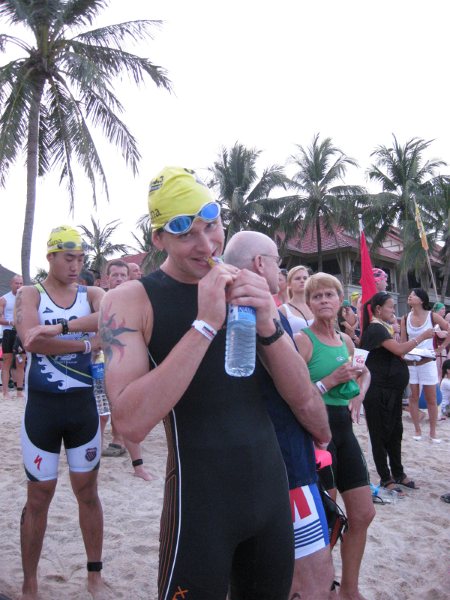In Part I of this carbohydrate restriction series from Ben Greenfield, you learned 4 reasons to think twice about eating carbohydrates before a workout, and that current research supports the idea that performing some of your endurance training with low carbohydrate stores and/or with low carbohydrate intake can actually promote the formation of multiple factors responsible for muscle repair, recovery and aerobic performance adaptations.
If you have comments or questions about any of this stuff, just leave them below this post, or in the Rock Star Triathlete Academy Member Forum and I’ll help you out.
So how is it that reducing carbohydrate availability during exercise might actually increase the effectiveness of the exercise session? Without delving too deeply into the nitty-gritty science, it all comes down to the fact that the repair and recovery of skeletal muscle tissue is dependent on the “transcription” of certain components of your RNA. And a bout of endurance exercise combined with low muscle carbohydrate stores can result in greater activation of this transcription, as well as the activation of enzymes involved in carbohydrate metabolism. In other words, by training in a low-carbohydrate state, you may train your body to recover faster and use carbohydrates more efficiently.
And this means that when you finally do decide to dump a bunch of carbs down the hatch, such as you might do during a race, you are going to be able to use those carbohydrates to an even greater advantage if you’ve included “starved” training sessions in your routine.
So now that you now that “training low and competing high” could give you a distinct advantage, what are some ways that you could limit carbohydrate availability in your training? Here’s 5 ways you can do it, along with the advantage and disadvantage of each approach.
1) Eat a low carbohydrate diet all the time, so you’re always training with reduced muscle carbohydrate stores. Advantage: easy to implement. Disadvantage: your immune system and central nervous system take a serious blow when you’re chronically carbohydrate depleted.
2) Do two training sessions a day, and don’t eat much after the first session so that your second session is performed on lower carbohydrate stores. Advantage: could be implemented only on certain days, so easier on the immune system. Disadvantage: can be tough to schedule.
3) Get up in the morning without eating anything and do your training session (AKA fasting). Advantage: easy to implement. Disadvantage: you can’t always train in the morning, and you need to be careful to eat enough the day before so you don’t completely crash during the workout.
4) Do a long training session and fuel minimally (i.e. go on a 3 hour bike ride and only take 2-3 gels with you). Advantage: you still get to eat carbohydrates in your diet, just not much during long exercise session. Disadvantage: you risk “bonking”, “hitting a wall”, or just not having much fun during the session as you chew on the inside of your cheeks.
5) Don’t eat carbohydrates after you finish an exercise session. Advantage: easy to implement. Disadvantage: carbohydrate intake post-exercise is partially responsible for your body’s repair and recovery signaling pathways.
Please take this word of warning before you throw out all your energy bars or sell your stock in Powerbar: it is not advisable to “train low, compete high” 100% of the time, or for every training session. Instead, simply choose a handful of training sessions during the week that you perform with the help of carbohydrates. This can be as simple as taking just 1-2 gels out on a long run or bike ride, or getting up in the morning and going for a swim on an empty stomach.
If you have comments or questions about any of this stuff, just leave them below this post, or in the Rock Star Triathlete Academy Member Forum and I’ll help you out.


